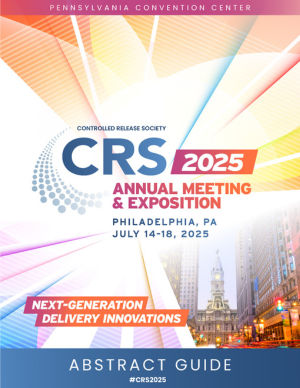Manufacturing and Process Scale-Up
Tech Session III: Manufacturing and Process Scale-Up
Molecular dynamics simulations uncover drying-induced lipid nanoparticle–excipient interactions.
Wednesday, July 16, 2025
11:16 AM - 11:27 AM EDT
Location: 123
Introduction: While RNA therapeutics are theoretically well-suited for treating pulmonary disorders via localized lung administration, this presents significant technical challenges in practice [1]. In response, we have proposed inhalable dry powder formulations of RNA-loaded lipid nanoparticles (LNPs) [2]. These formulations can be delivered to the lungs using well-established dry powder inhalers. The process of converting LNPs into dry powder formulations, however, induces structural changes. Here, we combined computational and experimental approaches, to provide insights into LNP behavior post-drying.
Learning Objectives:
At the completion of this activity, participants will know
- Gain insight into how MD simulations can be applied to improve the design of RNA delivery systems.
Nora Martini – PhD candidate, Ludwig-Maximilians-Universität Munich; Leonie Deßloch – PhD candidate, Ludwig-Maximilians-Universität Munich; David Jürgens – Postdoc, Ludwig-Maximilians-Universität Munich; Sjoerd Dijkstra – Master Student, Ludwig-Maximilians-Universität München; Olivia Merkel – Full Professor, Ludwig-Maximilians-Universität München

Benjamin Winkeljann, PhD (he/him/his)
Group Leader
Ludwig-Maximilians-University Munich
Munich, Bayern, Germany

